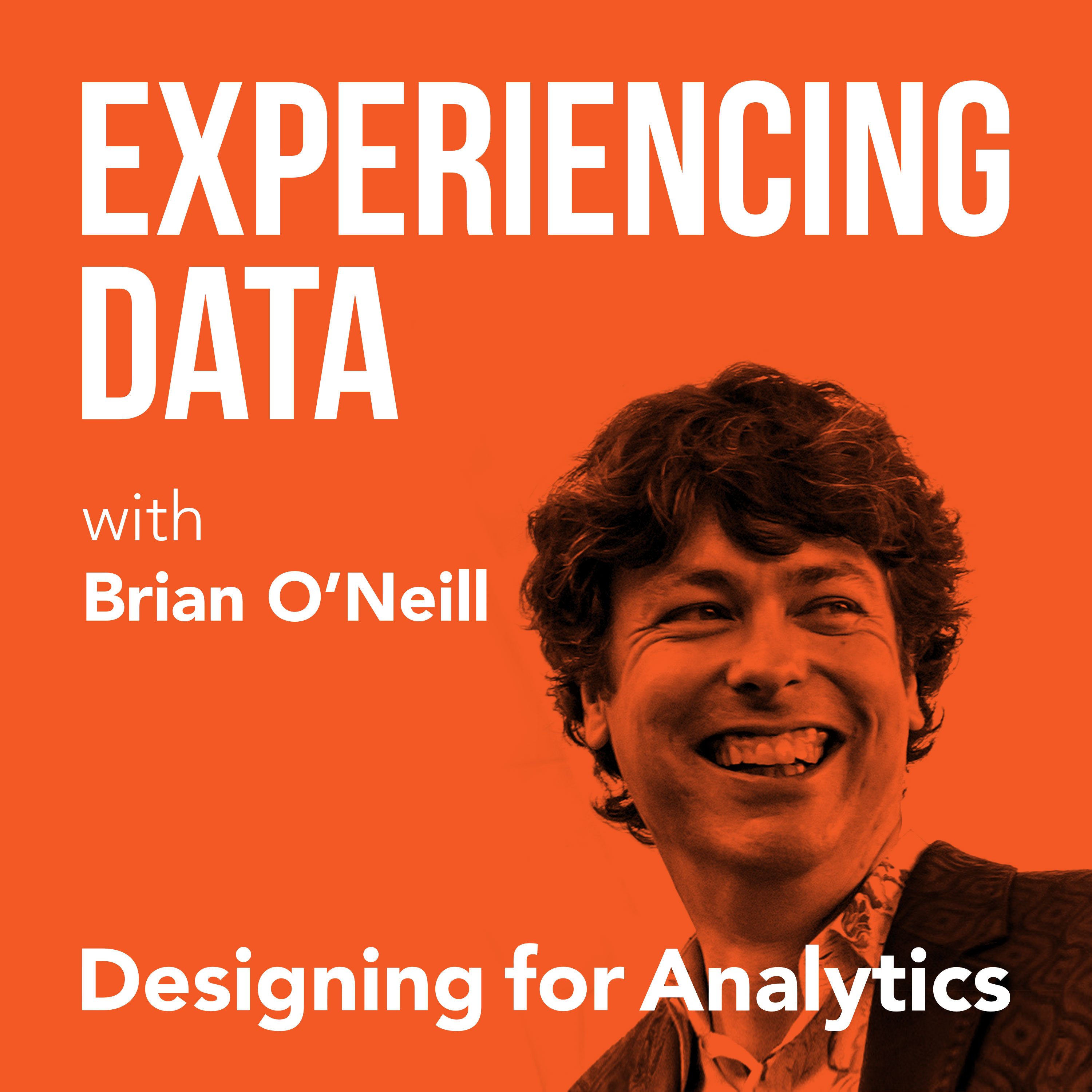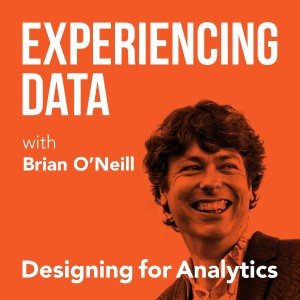

141.5K
Downloads
173
Episodes
Is the value of your enterprise analytics SAAS or AI product not obvious through it’s UI/UX? Got the data and ML models right...but user adoption of your dashboards and UI isn’t what you hoped it would be? While it is easier than ever to create AI and analytics solutions from a technology perspective, do you find as a founder or product leader that getting users to use and buyers to buy seems harder than it should be? If you lead an internal enterprise data team, have you heard that a ”data product” approach can help—but you’re concerned it’s all hype? My name is Brian T. O’Neill, and on Experiencing Data—one of the top 2% of podcasts in the world—I share the stories of leaders who are leveraging product and UX design to make SAAS analytics, AI applications, and internal data products indispensable to their customers. After all, you can’t create business value with data if the humans in the loop can’t or won’t use your solutions. Every 2 weeks, I release interviews with experts and impressive people I’ve met who are doing interesting work at the intersection of enterprise software product management, UX design, AI and analytics—work that you need to hear about and from whom I hope you can borrow strategies. I also occasionally record solo episodes on applying UI/UX design strategies to data products—so you and your team can unlock financial value by making your users’ and customers’ lives better. Hashtag: #ExperiencingData. JOIN MY INSIGHTS LIST FOR 1-PAGE EPISODE SUMMARIES, TRANSCRIPTS, AND FREE UX STRATEGY TIPS https://designingforanalytics.com/ed ABOUT THE HOST, BRIAN T. O’NEILL: https://designingforanalytics.com/bio/
Episodes

Tuesday Nov 02, 2021
Tuesday Nov 02, 2021
Even in the performing arts world, data and analytics is serving a purpose. Jordan Gross Richmond is the Chief Product Officer at AMS Analytics, where they provide benchmarking and performance reporting to performing arts organizations. As many of you know, I’m also a musician who tours and performs in the performing arts market and so I was curious to hear how data plays a role “off the stage” within these organizations. In particular, I wanted to know how Jordan designed the interfaces for AMS Analytics’s product, and what’s unique (or not!) about using data to manage arts organizations.
Jordan also talks about the beginnings of AMS and their relationship with leaders in the performing arts industry and the “birth of benchmarking” in this space. From an almost manual process in the beginning, AMS now has a SaaS platform that allows performing arts centers to see the data that helps drive their organizations. Given that many performing arts centers are non-profit organizations, I also asked Jordan about how these organizations balance their artistic mission against the colder, harder facts of data such as ticket sales, revenue, and “the competition.”
In this episode, we also cover:
- How the AMS platform helps leaders manage their performing arts centers and the evolution of the AMS business model. (01:10)
- Benchmarking as a measure of success in the performing arts industry and the “two buckets of context” AMS focuses on. (06:00)
- Strategies for measuring intangible success and how performing arts data is about more than just the number of seats filled at concerts and shows. (15:48)
- The relationships between AMS and its customers, their organizational structure, and how AMS has shaped it into a useful SaaS product. (26:27)
- The role of users in designing the solution and soliciting feedback and what Jordan means when he says he “focuses on the problems, and not the solutions” in his role as Chief Product Officer. (35:38)
Quotes from Today’s Episode
- “I think [AMS] is a one-of-a-kind thing, and what it does now is it provides what I consider to be a steering wheel for these leaders. It’s not the kind of thing that’s going to help anybody figure out what to do tomorrow; it’s more about what’s going on in a year from now and in five years from now. And I think the need for this particular vision comes from the evolution in the business model in general of the performing arts and the cultural arts in America.”- Jordan Gross Richmond (@the1jordangross) (03:07)
- “No one metric can solve everything. It’s a one-to-one relationship in terms of data model to analytical point. So, we have to be really careful that we don't think that just because there's a lot of charts on the screen, we must be able to answer all of our [customers'] questions.”- Jordan Gross Richmond (@the1jordangross) (18:18)
- “We are absolutely a product-led organization, which essentially means that the solutions are built into the product, and the relationship with the clients and the relationship with future clients is actually all engineered into the product itself. And so I never want to create anything in a black box. Nobody benefits from a feature that nobody cares about.”- Jordan Gross Richmond (@the1jordangross) (29:16)
- “This is an evolution that's driven not by the technology itself, but [...] by the key stakeholders amongst this community. And we found that to be really successful. In terms of product line growth, when you listen to your users and they feel heard, the sky's the limit. Because at that point, they have buy-in, so you have a real relationship. ”- Jordan Gross Richmond (@the1jordangross) (31:11)
- “Successful product leaders don't focus on the solutions. We focus on the problems. And that's where I like to stay, because sometimes we kind of get into lots of proposals. My role in these meetings is often to help identify the problem and make sure we're all solving the same problem because we can get off pretty easily on a solution that sounds sexy [or] interesting, but if we're not careful, we might be solving a problem that doesn't even exist.”- Jordan Gross Richmond (@the1jordangross) (35:09)
- “It’s about starting with the customer’s problems and working backwards from that. I think that you have to start with the problem space that they're in, and then you do the best job you can with the data that's available. [...] So, I love the fact that you're having these working groups. Sometimes we call these design partners in the design world, and I think that kind of regular interaction and exposure, especially early and as frequently as possible, is a great habit.”- Brian T. O’Neill (@rhythmspice) (40:26)
No comments yet. Be the first to say something!